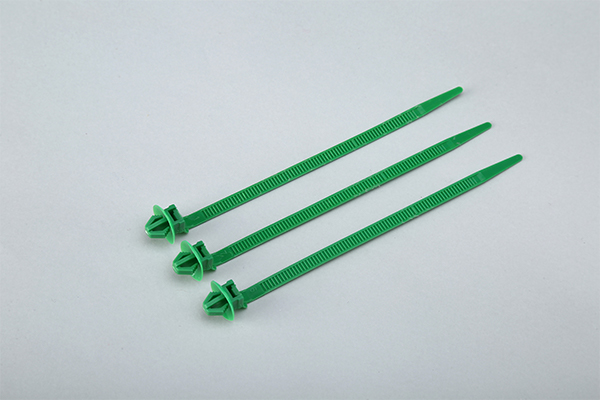Call Us Today
+86-577-62779772
+86-577-62706309 Send Us
Address
Zhejiang Yueqing Haitai Plastics Manufacture Co., Ltd.
Views: 0 Author: Site Editor Publish Time: 2024-10-18 Origin: Site









When it comes to securing cables, organizing wires, or bundling items together, nylon cable ties are the unsung heroes of the modern world. These small yet mighty tools are ubiquitous in both professional and DIY settings. However, a common question that arises is, "How long do nylon cable ties last?" Understanding the longevity of these essential items can help you make informed decisions about their use and maintenance.
The quality of the nylon used in manufacturing cable ties plays a significant role in their durability. High-quality nylon cable ties are designed to withstand various environmental conditions, making them more durable and long-lasting. Inferior quality ties, on the other hand, may degrade faster and fail to provide the same level of reliability.
Nylon cable ties are exposed to different environmental factors that can affect their lifespan. UV radiation, temperature fluctuations, and humidity levels can all impact the durability of these ties. For instance, prolonged exposure to direct sunlight can cause UV degradation, leading to brittleness and eventual failure.
The amount of load and stress placed on nylon cable ties also determines their longevity. Overloading the ties or subjecting them to constant tension can weaken the material over time. It is crucial to use cable ties within their specified load limits to ensure they last as long as possible.
Chemicals such as oils, solvents, and acids can deteriorate nylon cable ties. If the ties are used in environments where they are exposed to such chemicals, their lifespan can be significantly reduced. Opting for chemical-resistant variants can help mitigate this issue.
When used indoors, away from harsh environmental factors, nylon cable ties can last for several years. In controlled environments, where temperature and humidity are stable, these ties can maintain their integrity and functionality for extended periods.
For outdoor applications, the lifespan of nylon cable ties can vary. Standard nylon cable ties exposed to UV radiation and extreme weather conditions may last anywhere from one to three years. However, UV-resistant variants are available and can extend the lifespan to five years or more, depending on the severity of the conditions.
In specialized applications, such as those involving high temperatures or chemical exposure, the lifespan of nylon cable ties can be significantly shorter. In such cases, it is essential to choose ties specifically designed to withstand these harsh conditions. For example, heat-stabilized or chemical-resistant nylon cable ties can offer better performance and longevity.
Ensuring proper installation is key to maximizing the lifespan of nylon cable ties. Avoid over-tightening, as this can cause stress and weaken the material. Use the appropriate size and type of tie for the specific application to prevent unnecessary strain.
Conducting regular inspections can help identify any signs of wear and tear. Replace any damaged or degraded ties promptly to maintain the integrity of your cable management system. Regular maintenance can significantly extend the overall lifespan of your nylon cable ties.
Proper storage conditions can also impact the longevity of nylon cable ties. Store them in a cool, dry place away from direct sunlight and chemicals. Keeping them in their original packaging until use can help protect them from environmental factors that may cause premature degradation.
Nylon cable ties are versatile and reliable tools, but their lifespan can vary depending on several factors. Understanding the impact of material quality, environmental conditions, load and stress, and chemical exposure can help you make informed decisions about their use. By following best practices for installation, conducting regular inspections, and storing them properly, you can extend the lifespan of your nylon cable ties and ensure they continue to serve their purpose effectively.